What is a chiller?
Â
Chiller: It is a water cooling device. The chiller is a cooling water device that provides constant temperature, constant current and constant pressure. The working principle of the chiller is to inject a certain amount of water into the water tank of the machine first, and then cool the water through the chiller refrigeration system, and then the low-temperature cooling water is sent to the equipment to be cooled by the water pump, and the chilled water of the chiller takes the heat away and the temperature rises. The high reflux is returned to the water tank to achieve the cooling effect. The cooling water temperature can be adjusted automatically according to requirements, and long-term use can save water. Therefore, the chiller is a standard energy-saving device.
(1) The cooling principle of the chiller:
The operation of the chiller system is through three interrelated systems: a refrigerant circulation system, a water circulation system, and an electrical control system.
(B), chiller refrigerant circulation system:
The liquid refrigerant in the evaporator absorbs the heat in the water and begins to evaporate. A certain temperature difference is formed between the final refrigerant and the water, and the liquid refrigerant is completely evaporated to a gaseous state and then sucked and compressed by the compressor (pressure and temperature increase). The gaseous refrigerant absorbs heat through the condenser (air-cooled/water-cooled), condenses into a liquid, and is throttled by a thermal expansion valve (or capillary tube) to become a low-temperature low-pressure refrigerant to enter the evaporator, completing the refrigerant circulation process.
The basic components of the chiller refrigeration system:
1. Compressor: Compressor is the core component of the entire refrigeration system and the source of refrigerant compression. Its function is to convert the input electrical energy into mechanical energy to compress the refrigerant.
2. Condenser: The condenser plays the role of outputting thermal energy and allowing the refrigerant to condense during the cooling process. After the high-pressure superheated steam discharged from the refrigeration compressor enters the condenser, all the heat absorbed in the working process, including the heat absorbed from the evaporator and the refrigeration compressor and in the pipeline, is transferred to the surrounding medium (water or The air is taken away; the refrigerant high pressure superheated vapor recondenses into a liquid. (Depending on the cooling medium and cooling method, the condensers can be divided into three categories: water-cooled condensers, air-cooled condensers, and evaporative condensers.)
3. Liquid reservoir: The liquid reservoir is installed behind the condenser and is in direct communication with the drain pipe of the condenser. The refrigerant liquid in the condenser should flow unimpeded into the reservoir so that the cooling area of ​​the condenser can be fully utilized. On the other hand, when the heat load of the evaporator changes, the required amount of the refrigerant liquid also changes, and at that time, the reservoir functions to regulate and store the refrigerant. For a small chiller refrigeration system, the reservoir is often not installed, but a condenser is used to adjust and store the refrigerant.
4 , drying filter: in the chiller refrigeration cycle must prevent moisture and dirt (oil, iron filings, copper filings), etc., the source of moisture is mainly the newly added refrigerant and lubricating oil contains traces of water, Or moisture due to air ingress when servicing the system. If the moisture in the system is not cleaned out, when the refrigerant passes through the throttle valve (thermal expansion valve or capillary), the moisture will solidify into ice due to the pressure and temperature drop, which will block the passage and affect the normal operation of the refrigeration unit. Therefore, a dry filter must be installed in the chiller refrigeration system.
5. Thermal expansion valve: The thermal expansion valve is both a flow regulating valve in the chiller refrigeration system and a throttle valve in the refrigeration device. It is installed between the drying filter and the evaporator in the refrigeration device. The warm pack is wrapped at the outlet of the evaporator. Its main function is to reduce the pressure of the high-pressure normal temperature refrigerant liquid when flowing through the thermal expansion valve, and become a low-temperature low-pressure refrigerant wet steam (mostly liquid, a small part is steam) enters the evaporator and vaporizes in the evaporator. It absorbs heat and achieves the purpose of cooling and cooling.
6. Evaporator: The evaporator is a heat exchange device that relies on the evaporation (actually boiling) of the refrigerant liquid to absorb the heat of the cooled medium. Its function in the refrigeration system is to absorb heat (or output cooling). In order to ensure a stable and long-lasting evaporation process, the vaporized gas must be continuously withdrawn by a refrigeration compressor to maintain a certain evaporation pressure.
7. Refrigerants: Most industrial chillers used in modern industry use R22 or R12 as refrigerants. Refrigerant is a working fluid in a refrigeration system. Its main function is to carry heat and achieve heat absorption and heat release when the state changes.
Manual Operating Table
This operation manual table is widely used in operating rooms in hospital and clinics. The manual Operating Table is suitable for surgery operations on body parts head, neck, chest, abdominal cavity, perineum and extremities. And for wide general surgeries, obstetrics and gynecology, ENT, orthopedics and other surgical use.
The manual Surgical Table can be adjusted flexibly like table up and down, backboard folding up and down, head board folding up and down, leg board folding down, tabletop lean left and lean right, tabletop lean forward and backward by the foot pedal pump and the manual hand wheels.
Matrial of the whole structure is stainless steel.
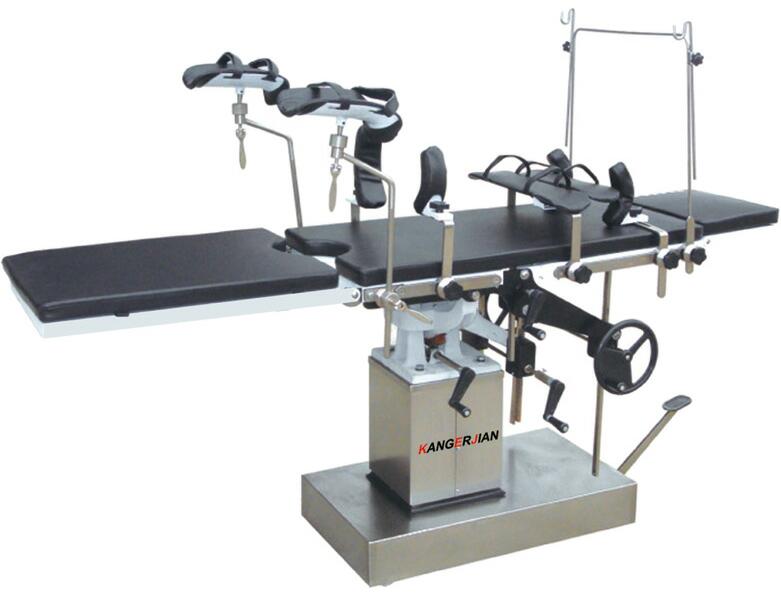
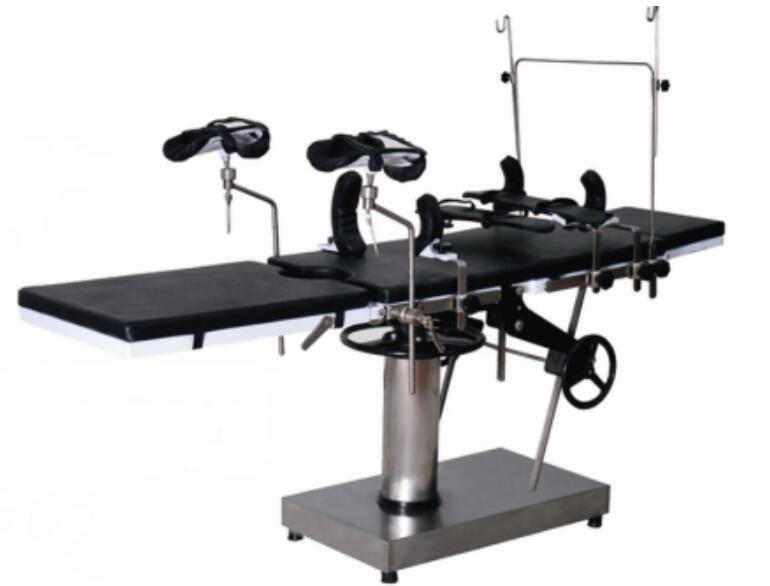
Certificates
Certificates of CE, ISO9001, ISO13485, CFDA are approved.
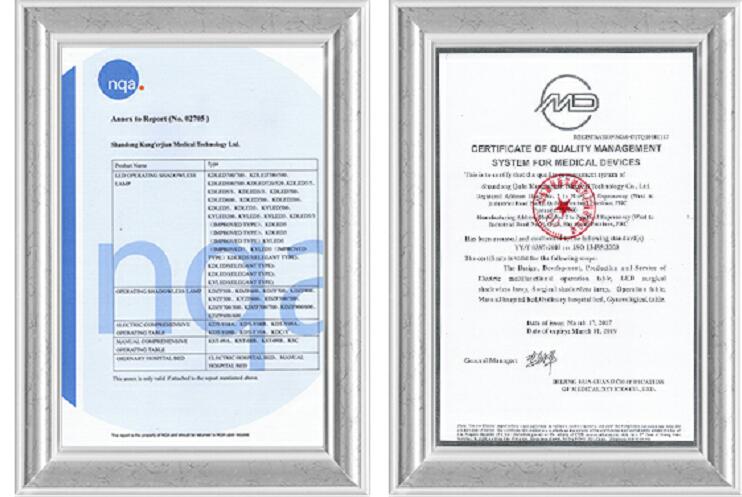
Company
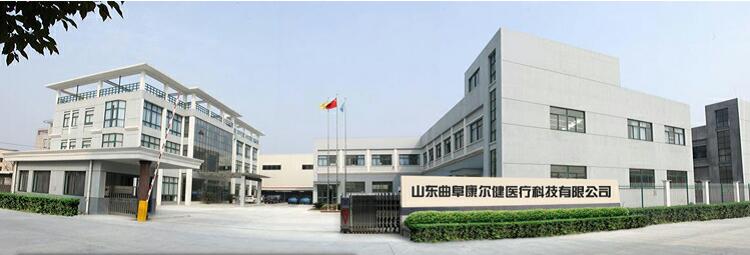
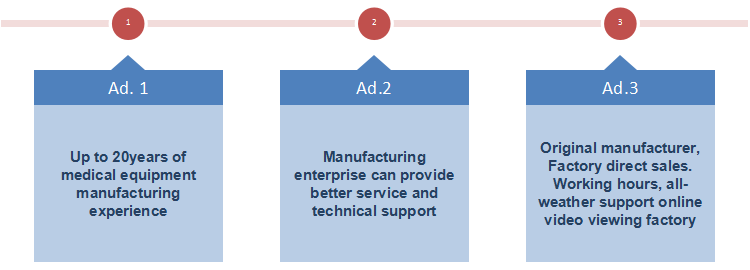
Shangdong province is the main machinery production base in China.
KANGERJIAN Medical Technology Co., Ltd. is a group of senior lighting design expert and machinery manufacturing expert company with 20years experience and factory locating in the east city--the hometown of confucius--Qufu in Shandong province, China.
The Company has passed the ISO:9001:2008 quality system certification, ISO13485:2003 quality system certification, CE certification and CFDA certification, so that the enterprise management standards and product quality is relatively connected to expand the international market for enterprises to lay the foundation.
Our main products: Operation Theatre Lights , Operating Room Lights , Halogen Operating Light , LED Operating Light , Surgical Operating LED Light , LED Examination Light , Mobile Type Operating Light , Gynecology Examination Tables , Obstetric Delivery Bed , Electrical Gynecological Table, Obstetric Delivery Table , Delivery Examination Table , Electric Hydraulic Operating Table, Electric Medical Operating Table, Manual Electric Operating Table, Surgical Table, Operating Table, Operating Theatre Pendants , icu tower crane in ICU room, LED Viewbox etc. professional medical equipment.
KANGERJIAN Team
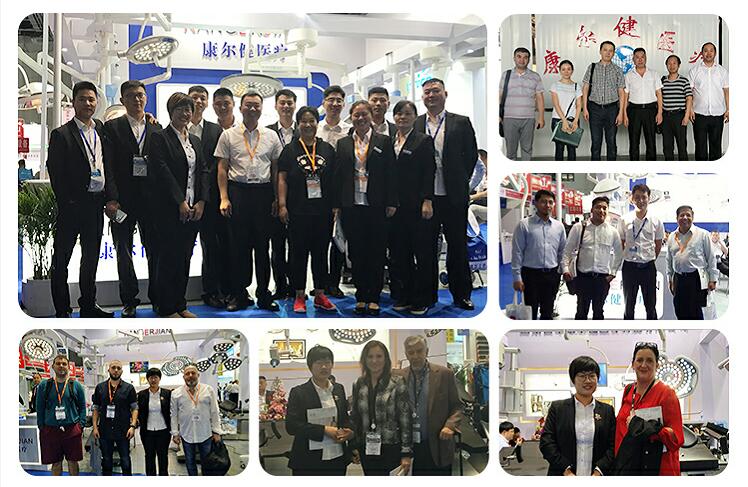
Package:
Inner Package---Dust-proof plastic film+ qualified shockproof foam
Outer Package---Thick Plywood case for over sea delivery
We support ODM of the package if there's special demands from clients
Shippment:
Sea shipping, Air transportation, Expresses like DHL, UPS FEDEX, TNT etc. Our forwarder give good price support.
Clients also can choose their own forwarder.


Manual Operating Table
Manual Operating Table,Manual Electric Operating Table,Manual Gynecological Operating Table,Manual Universal Operating Table
Shandong Kang'erjian Medical Technology Ltd. , https://www.operatingtable.nl







